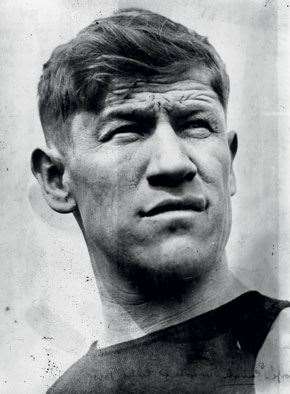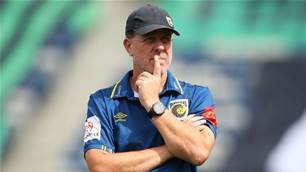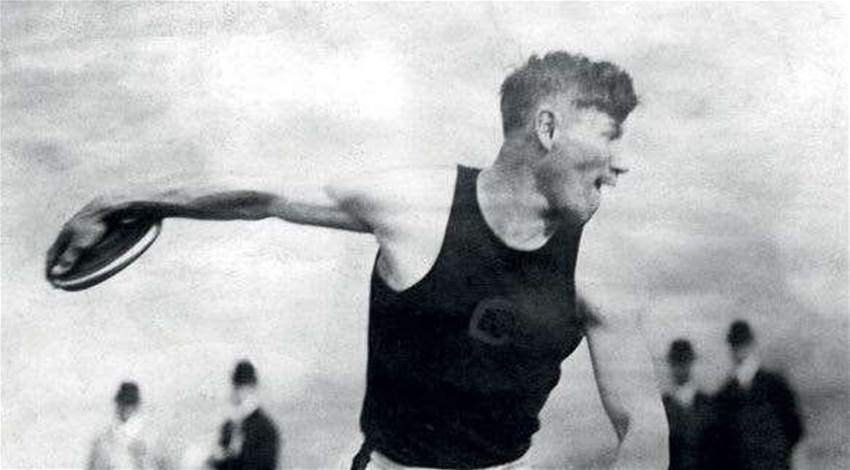Everything Thorpe did was a “first”. He played a staggering range of sports, and excelled at them all.
 Image: Getty Images
Image: Getty ImagesEverything Thorpe did was a “first”. He played a staggering range of sports, and excelled at them all.
Jim Thorpe, widely recognised as the greatest athlete of the 20th Century, was an innovator in so many ways it’s difficult to know where to begin. His pioneering was possible only because of one thing: his ridiculous talent.
Everything Thorpe did was a “first”. He played a staggering range of sports, and excelled at them all. He became a symbol of what can happen when brutally indiscriminate rules – like the mindless amateur “ideal” that kept many a champion athlete impoverished, often for the rest of their lives – affect innocent individuals. He was the first man of American Indian descent to rise to such prominence in the popular imagination.
From the moment in 1907 when Thorpe performed a spontaneous 175cm high jump in his overalls and boots just for a lark (embarrassing an entire athletics team)
at Carlisle Indian Industrial High School in Pennsylvania, Thorpe was a sensation.
By 1911, he was famous. That year and in 1912, he was granted prestigious All-American honours. In ‘11, lowly Carlisle won the national collegiate championship (American football) thanks only to Thorpe and finished the season 11-1. In the win against a Harvard team that was, in those days, almost unbeatable, Thorpe scored every point in the 18-15 upset, and did it playing as punter, placekicker, running back and defensive back.
In 1912, Carlisle won it again. This time he scored an astounding 198 points during the season, including 25 touchdowns. Against Army, Thorpe scored an 84m touchdown, but it was called back, as a penalty went against a team-mate. The next play, he scored a 97m TD ...
President Dwight D. Eisenhower, who played against him, recalled Thorpe in a 1961 speech: “There are some people who are supremely endowed. Jim Thorpe ... never practised in his life, and he could do anything better than any other football player I ever saw.”
Thorpe loved competing, not practising. The other thing Thorpe never managed to practise much was athletics; he only got round to training for the 1912 Stockholm Olympics in the spring of that year. At first, he concentrated on the jumps, the hurdles and shot-put. Such was his physical prowess, he soon added pole vault, javelin, discus, hammer and the 56-pound weight. This would allow him to compete in the pentathlon and the decathlon, as well as the high and long jumps.
At the time of the trials, Thorpe could dash off 100 yards (91m) in ten seconds, 220 (200m) in 21.8, 440 (400m) in 51.8, 880 (800m) in 1:57, a mile (1.6km) in 4:35, the 120-yard (110m) hurdles in 15 and the 220-yard (200m) hurdles in 24. He could long jump 7.16m, high-jump 196cm, pole vault 3.35m, put the shot 14.5m, throw the javelin 49.6m and the discus 41.5m. The man was an entire athletics team, and there were times at Carlisle when he was precisely that, as no one there was able to best him in any event.
The Olympic trials were a doddle – and there was no shortage of great athletes for him to embarrass. Of course, his Games were busy: decathlon, pentathlon, long jump, high jump, and two exhibition baseball games. Thorpe won four of the five pentathlon events and placed third in the javelin, which he’d never competed in before 1912. He won the gold medal. The same day, he placed fourth in the high jump and later, seventh in the long jump.
In the decathlon, which was his first ever, he had strong competition from the local hero and decathlon “veteran” Hugo Wieslander. Thorpe defeated him by more than 700 points, placing top four in all ten events. His Olympic record of 8413 points stood for nearly two decades.
Thorpe returned to the States to ace the Amateur Athletic Union’s All-Round championship. They responded by declaring that Thorpe had transgressed the strict laws of amateurism by receiving two dollars a game for playing baseball in 1909-10. The IOC responded at the urging of the AAU, stripped Thorpe of his Olympic medals and expunged his name from the record books. He was treated like a common cheat.
There was nothing for him to do but dominate the professional ranks of any number of sports, and there was no shortage of offers. He could’ve been the greatest at anything he chose, but Thorpe was a powerhouse with a need to compete, and he played professional baseball, football and basketball, mostly all during the same year. Thorpe actually played for the New York Giants in two sports. In football, he was their running back and in baseball, an outfielder. Teams would climb over each other to sign him up just because he would increase crowds tenfold.
Thorpe is enshrined in the pro football, college football, US Olympic and national track and field Halls of Fame. He died at 65 in 1953. Thirty years later, the IOC restored him to the status of Olympic champion. Life is a theatre of the absurd; justice one of its grimmest jokes.
-Robert Drane
Related Articles

Champion A-League coach set to join Premier League giants

Emerging Socceroos star set to sign for MLS club













